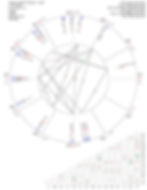
Emperor Haile Selassie
Introduction
About
Date of Birth: July 23, 1892
Time of Birth:
Place of Birth: Ejersa Goro, Hararghe,
Long:
Lat:
Ascendant:
Time Zone:
Sun sign:
Moon Sign:
Haile Selassie I, born Lij Tafari Makonnen on July 23, 1892, in Ejersa Goro, Ethiopia, rose to prominence as Emperor of Ethiopia from 1930 to 1974. He belonged to the Solomonic dynasty, claiming lineage from Emperor Menelik I, who, according to Ethiopian tradition, was the son of King Solomon and the Queen of Sheba.
Before ascending to the throne, Haile Selassie served as Regent Plenipotentiary of Ethiopia for Empress Zewditu from 1916. He played a crucial role in defeating Ras Gugsa Wole Bitul at the Battle of Anchem in 1928, consolidating his power.
Haile Selassie initiated modernization efforts in Ethiopia, introducing the country's first written constitution in 1931 and abolishing slavery. His attempts to defend Ethiopia during the Second Italo-Ethiopian War were unsuccessful, leading to Italian occupation. He spent the majority of this period in exile but returned in 1941 after the East African campaign.
As emperor, Haile Selassie dissolved the Federation of Ethiopia and Eritrea in 1952, annexing Eritrea into Ethiopia, despite facing resistance to prevent secession. His internationalist views led Ethiopia to become a charter member of the United Nations. In 1963, he presided over the formation of the Organization of African Unity (OAU), serving as its first chairman.
However, Haile Selassie's rule faced criticism for suppressing rebellions and opposition to his reforms, particularly from the landed aristocracy. Human rights groups accused his regime of being autocratic and illiberal. Challenges included the persecution of the Harari people, relocation of Amharas, and criticisms regarding language policies.
Haile Selassie's stance on Rastafari's view of him as God incarnate remained ambiguous. While he denied his alleged divinity in a 1967 interview, some interpretations suggest neither an affirmation nor denial. Despite being a Christian, he played a significant role in the popularization of Rastafari, particularly after his visit to Jamaica in 1966.
In terms of personal life, Haile Selassie had six children with Empress Menen Asfaw. Controversy surrounded the maternity of Princess Romanework. The descendants of his children became involved in public disputes, notably during the auction of the late Emperor's Patek Philippe watch in 2017.
Haile Selassie faced challenges in his later years, including a failed coup in 1960 and growing internal discontent. Economic challenges, military mutinies, and famine in the early 1970s contributed to unrest. In 1974, he was overthrown in a military coup by the Derg, a Marxist–Leninist junta. Haile Selassie was placed under house arrest, and in 1975, he was reported dead, with circumstances disputed.
His legacy remains complex, with both praise for his efforts to modernize Ethiopia and criticisms for his handling of internal challenges and human rights issues. Haile Selassie's impact on the Rastafari movement and his symbolic role as a figurehead for African liberation continue to resonate globally.
Reference:
